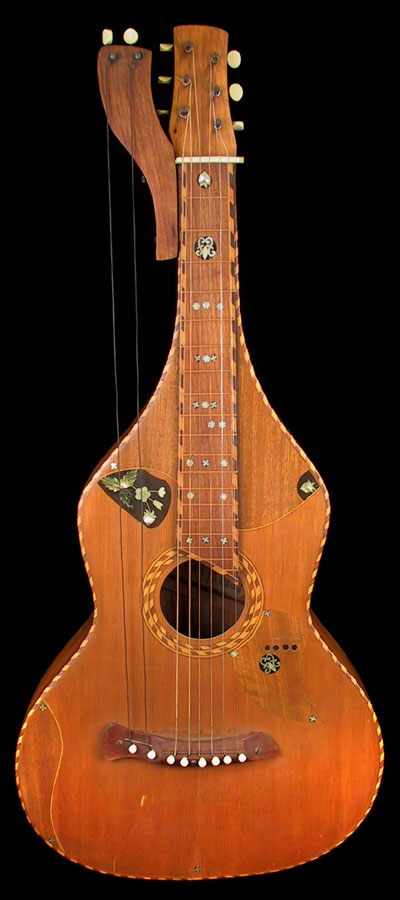
During the very last years of his storied life and career, Chris Knutsen (for those just joining us, we pronounce it “Kuh-newt-son”) often went “all out” on his steel guitars, which were usually of the harp variety (he was then no longer building standard harp guitars). This included lots of creative “puzzle piece” top construction (the striking designs not made with inlaid woods, but from different adjoining wood “cut-out” pieces, assembled via simple glued butt joints where they met), his ubiquitous “alternative” (and mostly unidentifiable) woods, and lots of extra random inlay of pearl and other materials.
Perhaps the fanciest – and also finest – is Knutsen Archives Inventory number HHW16 (at left), part of the private collection of the Claremont Folk Music Center, now owned by steel guitar player Ben Harper. It has all of the above ingredients, plus a separate, floating, additional back. Positioned ¼” off the back by two standoffs, it was obviously designed to allow the back of the instrument to vibrate when the separate piece contacts the player’s lap and legs.
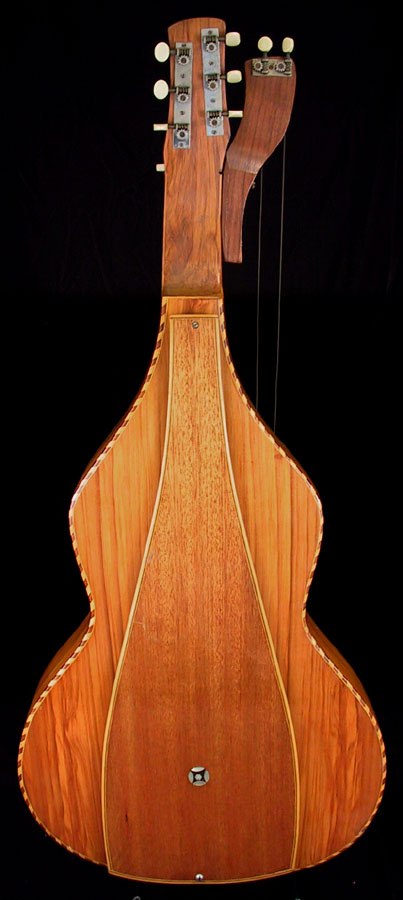

There is no way to know if the ever-creative Knutsen came up with the idea on his own (I invariably imagine so), or saw it elsewhere. It’s a concept known from Vienna’s Stauffer and Scherzer, and probably several other luthiers throughout history.
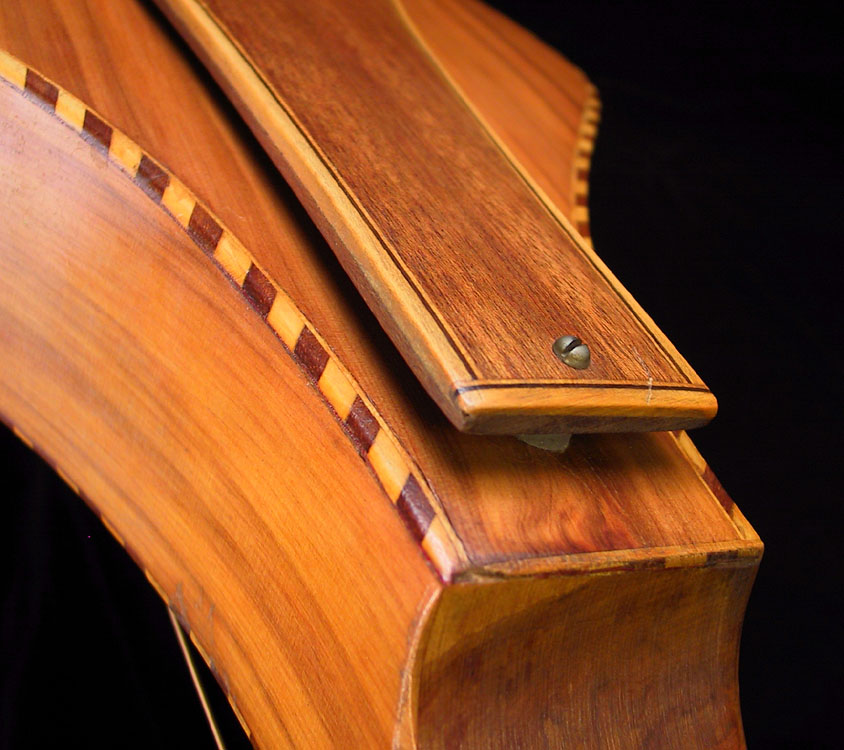
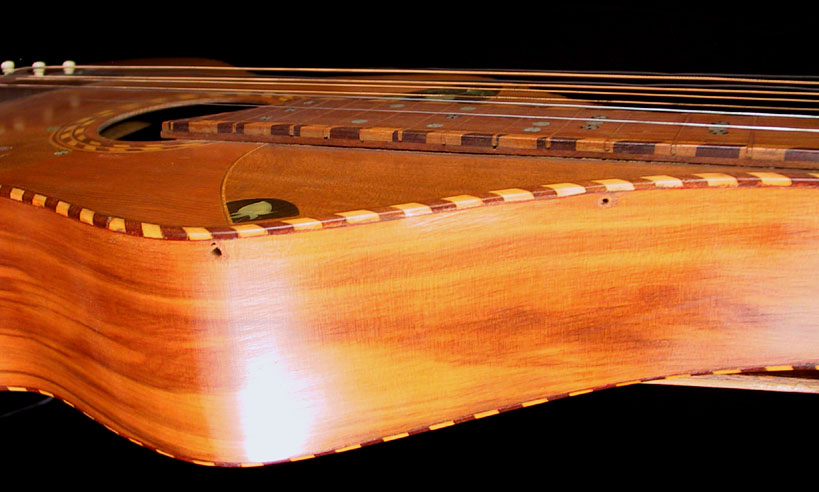
The Claremont specimen was built as a typical 12-course “Weissenborn-shaped” harp steel, i.e.: 2 floating basses on an attached arm bracket, 6 neck strings (on a high, slanted nut), and 4 trebles on the body. But the trebles only showed evidence of being attached at one end…what the…?! As shown in its Archive listing, and again at left, there were only two tiny screw holes on the edge of the body to offer a clue. I determined that the body itself was all original (nothing plugged or covered up, as so often happens when unimaginative guitarists try to turn their Knutsen harp steels into normal 6-string Hawaiian guitars) – and thus there must have been some sort of treble bracket capturing the other ends of the 4 treble strings, likely attached by two screws to the body. There are a couple of other Archives specimens with similarly mysterious treble sections, and it always bugged me!
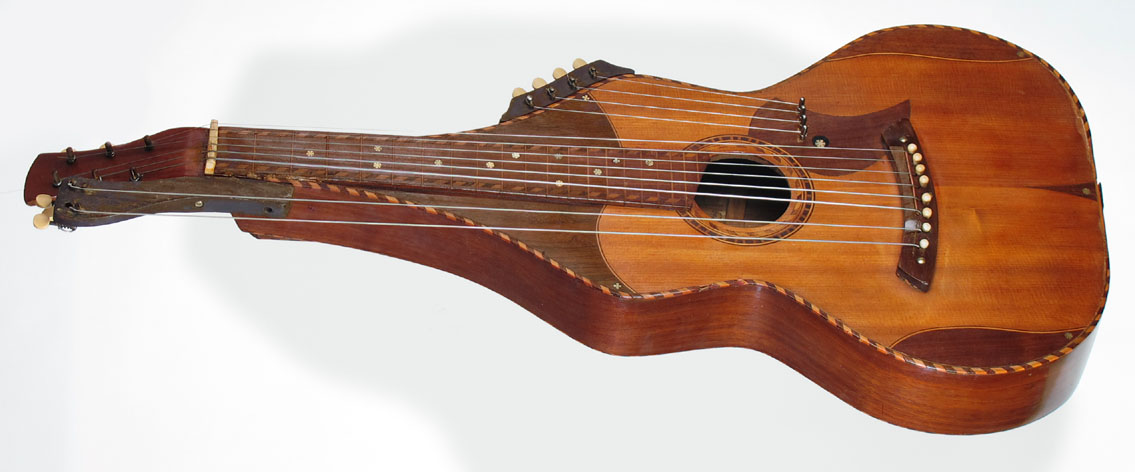
And so I was very excited to discover this instrument, from the same period – Knutsen’s last 3 years on McDuff Street in Los Angeles.
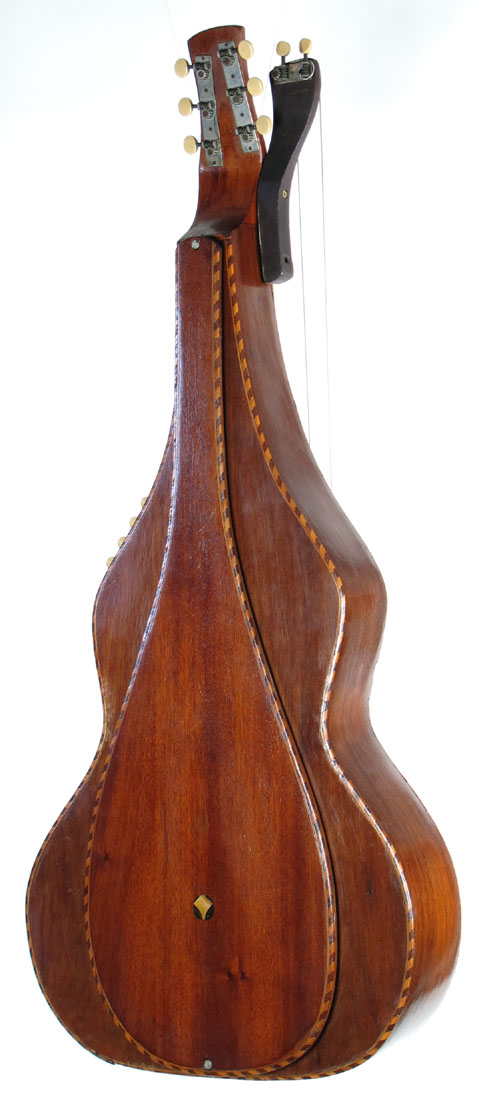
Not only was it the second specimen found with a floating back, but it had all the original hardware, including the missing treble tuner section! Not too surprisingly (but a relief, nonetheless), it was exactly as I had pictured: a set of 4 geared tuners (from a mandolin) installed in a simple wooden piece, shaped to attach to that part of the upper bout, held by two wood screws (a poor design, due to the tension). In the past, both ends of the treble strings would have been held by simple zither pins, but apparently Knutsen had finally decided to use higher ratio tuners to easier tune these strings – just as he had finally switched from the simple zither pins for the two sub-basses to the two “buck teeth” geared tuners. Curiously, for this configuration, he chose to install the other end of the trebles (via redundant zither pins) smack in the middle of the fragile top, rather than the bridge. Perhaps he was trying to get them to excite the top more…?


But this blog was supposed to be about the ultra-cool floating backs (thanks for allowing me to geek out about the treble tuners discovery). This instrument (no Archive number yet…I’m a hundred specimens behind!), though heavily re-finished with something overly dark, nevertheless shows similarly fancy and creative appointments like HHW16, though not nearly as elaborate. But its beautiful mahogany floating back is a nice upgrade, as it is rope bound (that’s three rope-bound edges on this one, plus the fingerboard!). The separate back piece is nicely symmetrical – if something looks off, it’s because the body is extremely asymmetrical. Knutsen is well known for his often sloppy, no-template handwork, but this one has a lower treble bout so greatly enlarged, I wonder if he was trying something deliberate? (what, I couldn’t possibly imagine)
I had bought this one primarily just for a chance to properly research it (something the owner/seller was incapable of), though also half in the hopes of improving on the others I have (and love). Even though the extra back alone was “worth the price of admission,” I reluctantly decided to sell it, as it needed a ton of work (see the old listing here), and I was desperately in need of cash flow at the time.

Meanwhile, during the very five days that I was anxiously awaiting the arrival of this ultra-rare, ultra-cool Knutsen harp steel, my repairman/Knutsen pal Kerry Char called me to say that he had just gotten one! I immediately panicked (having just paid) – could the seller have been trying to “double-dip”?
But no, Kerry had managed to get (in a trade) a third floating back Knutsen harp steel…just a ridiculous coincidence that both turned up at the same time. His is a plain model, but otherwise great shape, with the back piece shaped more like Claremont’s. Note that it is an 8-course, with just the two extra subs.
No, the weird business in the upper treble bout is not yet another missing treble string attachment mystery, but what we believe is apparently the remnants of someone’s charming addition of a music holder. After all, in lap position, what could be more ideal?!
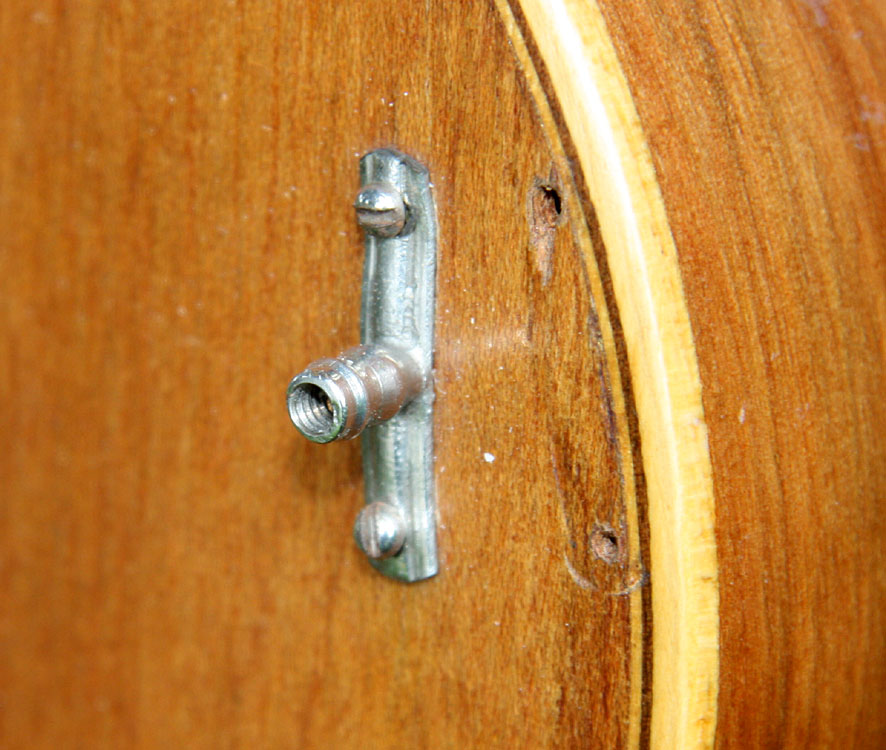
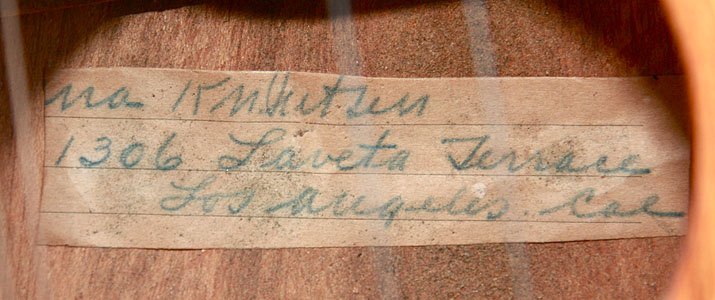
To bore you a bit more, Kerry’s has an additional tidbit for Knutsen researchers (all five of us): a “label” that appears to have been cut from a letter addressed to Chris’ wife: “(An)na Knutsen, 1306 Laveta Terrace.” As aficionados know, Knutsen often skimped and cut out any scrap of paper with his latest address on it to use as a crude ad hoc label (a hilariously tacky and loveable feature). Here, he appears to have rifled through his wife’s discarded mail as well – kind of strange, as these 1927-1930, final-period instruments are usually seen with McDuff St. labels (most just business cards), which he obviously had printed up. Even stranger, though, is the new mystery address: 1306 Laveta Terrace happens to have the exact same street number of their known address, 1306 McDuff (their daughter Myrtle’s family’s home). Today, McDuff runs into Laveta Terrace, which jogs around it to parallel and hit Sunset (both are extremely short, 1-block “streets”). Was it actually the same home, with some address confusion or street changes going on at the time?
Clearly a job for my belated Knutsen-in-Echo Park investigative reporter Darrell Urbien. To be continued.
And so is the hunt for more Floating-Back Knutsen Harp Steels!
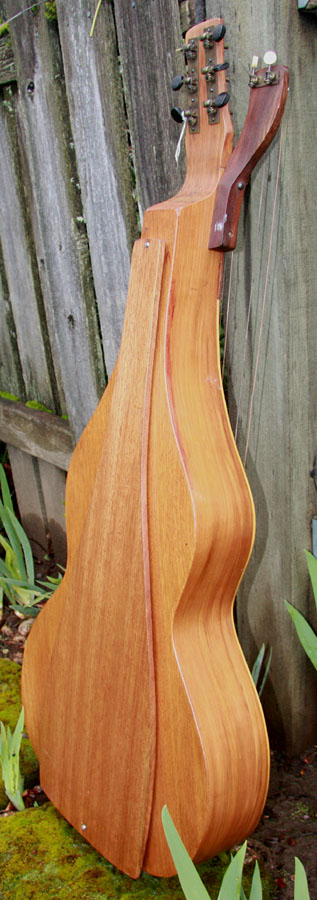

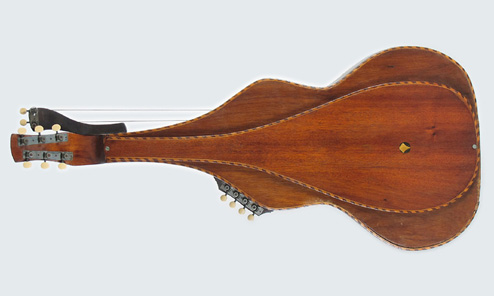
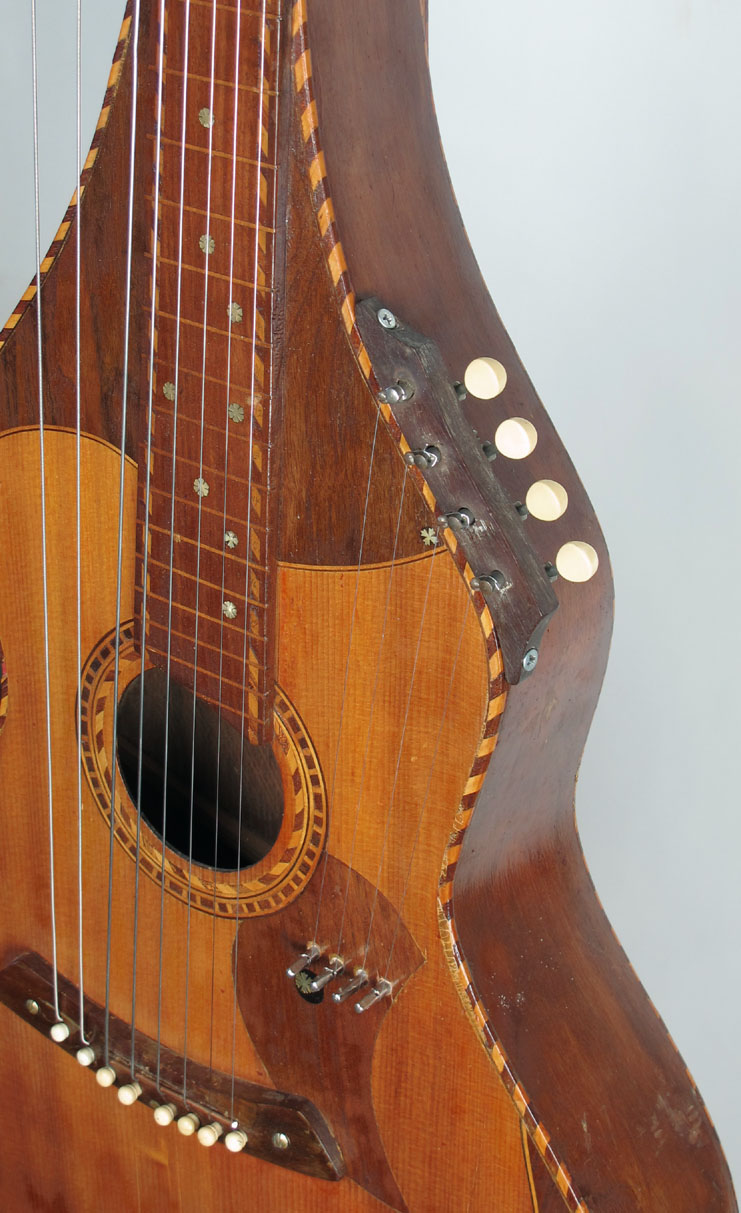
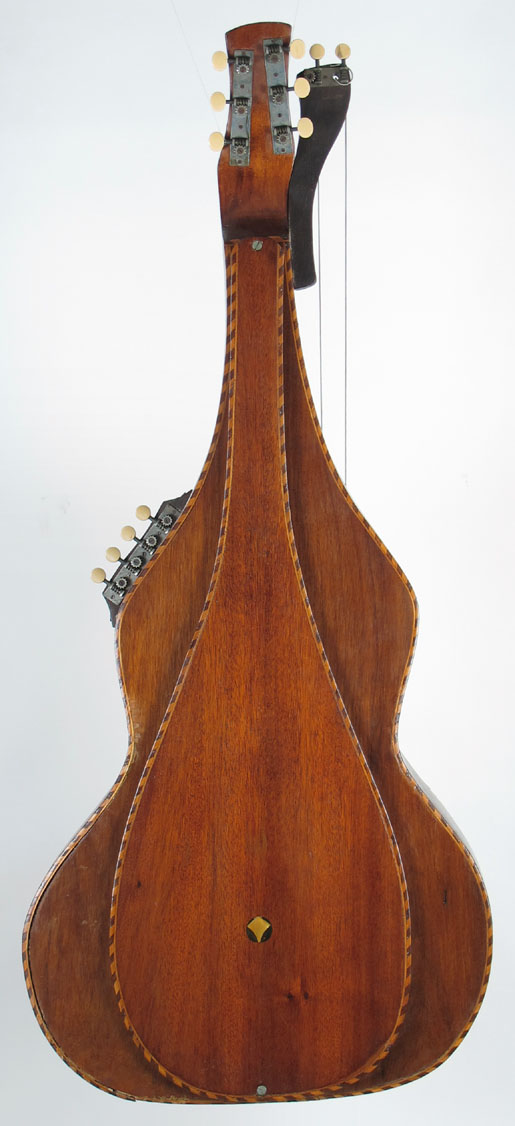
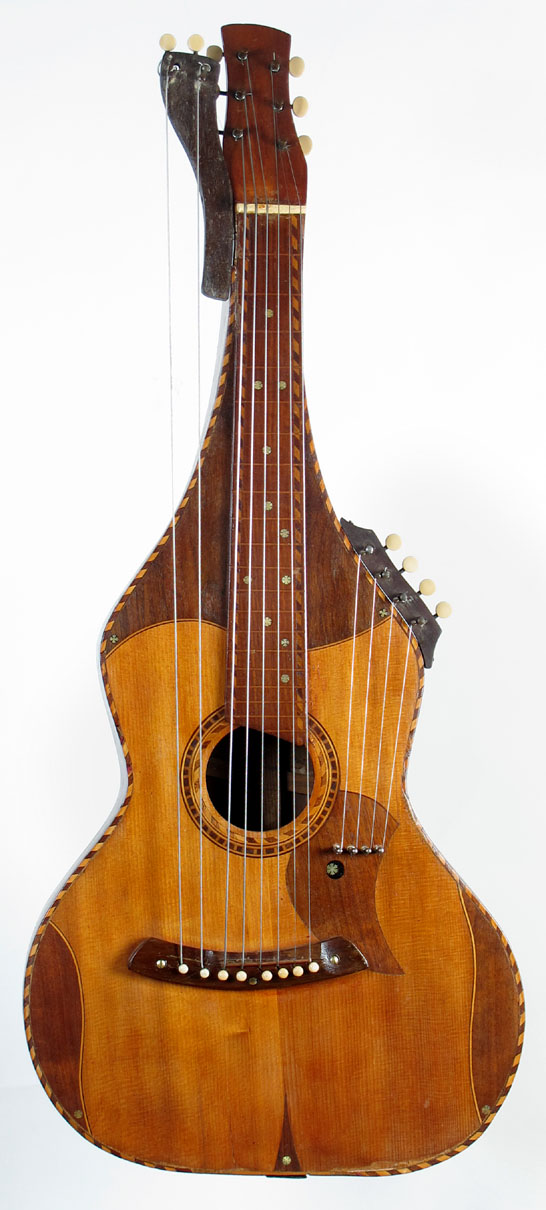
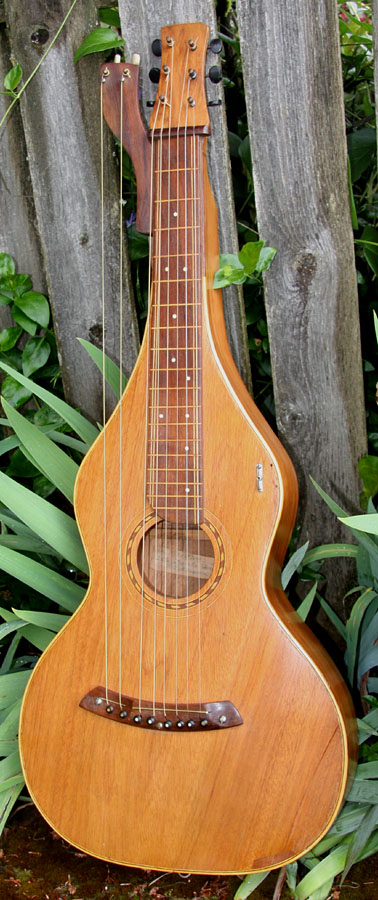
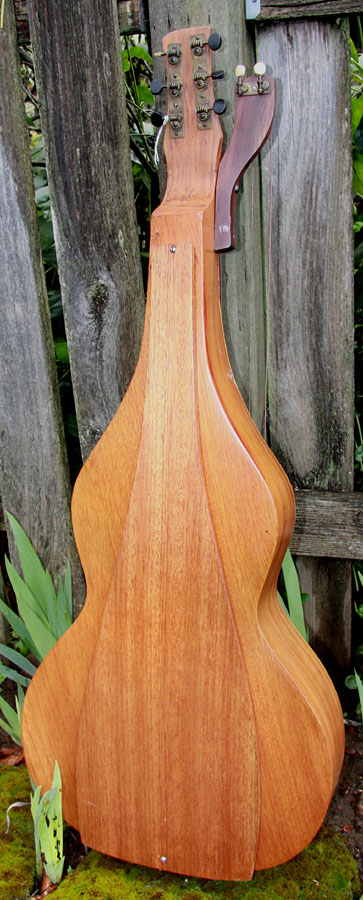

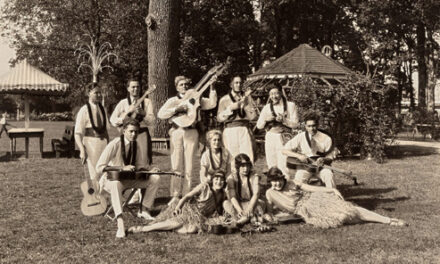
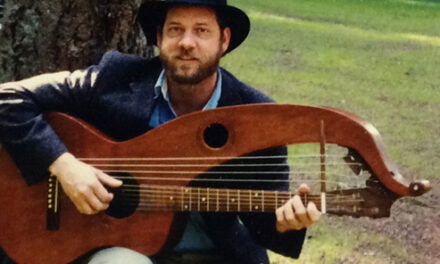
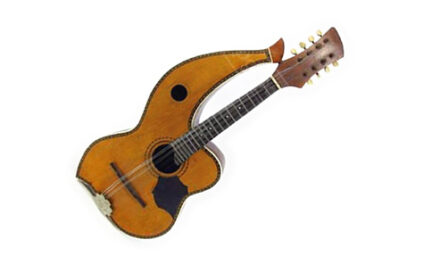
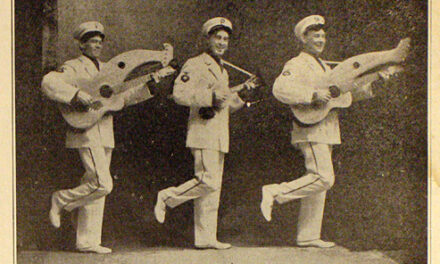
These are so cool. I wish I had the cash to get yours when it was available!
Re: puzzle piece bodies and asymmetry – I am convinced Knutsen’s instruments are shaped by the available wood he had. If he had a narrow board, the instrument got a little narrower. If he only had a short spruce board that wasn’t long enough to cover the upper treble bouts of a Weissenborn shaped steel (still somewhat of a problem today) then it got “extended” with a little contrasting wood. Knots? Pinholes? That’s what inlay is for! I think this is why there are “vampire fangs” on some of the instruments – to cover bookmatched defects in the planks. Come to think of it, maybe that’s why he’s not building HGs in LA – the inavailability (or expense) of big chunks of clear spruce.
Re: floating backs – it is curious to me how similar in shape they are to the “pineapple-shaped” Hawaiians. I think by bridge type/label those came first; I can see him looking at this pile of scrap and deciding he might as well use it for something.. Or maybe he had some offcuts from other instruments that weren’t the right shape for harp mandos or ukes.
Re: Laveta vs. McDuff, I will have to go back to the City map department to ask when the street got its name, but all the info I have for the period we’re talking about show it as McDuff.